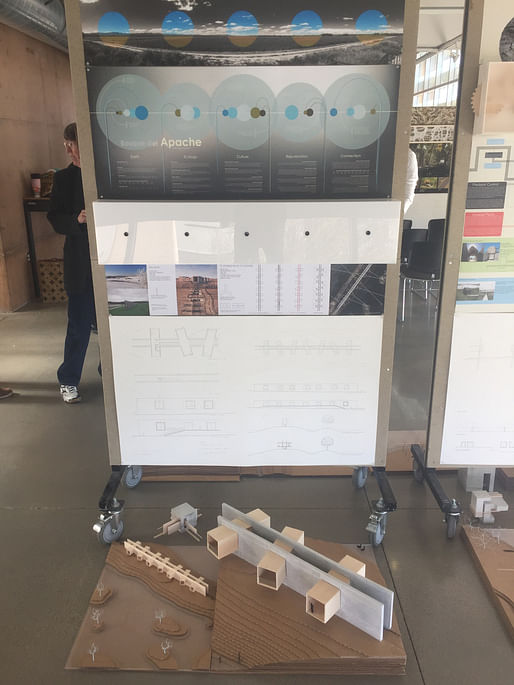
Shreya Bhaskare, 200 level student
The landscape of the Southwest is undeniably unique. Miles of visibility, sandy gold tones, violet-laced sunset mountains, and picturesque desert vegetation compose the surroundings of the University of New Mexico’s School of Architecture and Planning. As a 200 Level, or second year student, I have gathered a great appreciation for the beauty of New Mexico through my education. Even after a year and a half of living in New Mexico, I am still inspired and amazed by its distinct landscape and its clear influence on the local architecture.
Since the landscape of New Mexico is artistically inspiring, it is appropriate that the focus of the second-year curriculum at UNM SA+P is to design architecture that integrates with the land. During the first semester of 200 Level (Studio 201), the mission is to study and understand the complexities of a natural setting, as opposed to an urban setting. For this year’s 201 project, we visited Bosque del Apache in mid-September. The Bosque is a national wildlife refuge located in southern New Mexico and aims to preserve the populations of Sandhill Cranes, Snow Geese, and other migratory birds that were dwindling due to the channeling of the Rio Grande. In fact, the main attraction of this refuge is the arrival of the birds in the wintertime. Thousands of people from all over the world attend what is known as the Cranes Festival to witness the gathering of the cranes, geese, and ducks.
The premise of our assignment is to discover an architectural concept embedded in the land that describes the site and then develop it into a cohesive series consisting of a photo essay, concept mapping model, site analysis, and a public gallery and private residence. We are also required to design a gestural land sculpture that speaks to the building and acts as a duck blind to hide the human figure from the birds.Throughout this process, I have learned that architecture is about more than just a building placed onto the ground. My first few designs for the building failed because I only focused on human to building interaction, neglecting building to landscape interaction. It was imperative for me to think beyond conventional standards and design a piece that fits into the site seamlessly.
I have realized that architecture is about humanity – about preservation, cultural significance, and interaction. It should provide the ability for humans to interact not only with each other in the space, but also with the structure itself. Delving even deeper, the structure should be sustainable, a form that enhances its surroundings both ecologically and visually. Some of the best designs in our studio have a clear connection with the landscape – whether it be aesthetically or functionally. As I finalize my design, I have made sure to reflect what I have learned from the landscape throughout the semester into my project.


Shreya Bhaskare

Tyler Hagengruber, 200 Level student, concept: Reconnecting man and nature by breaking through the barrier and allowing oneself to be immersed in nature

Ownen Schwab, 200 Level student | concept, Emulating the natural obstructions that conceal and reveal one's view.
Want to know if UNM SA+P is the right school for you? Stay tuned as the 2016-2017 UNM AIAS board delves into what life is like within and beyond the walls of the University of New Mexico's School of Architecture and Planning. From the greater Southwest to our own studio culture and family, this blog series will highlight just some of what makes the UNM SA+P experience so unique.



No Comments
Block this user
Are you sure you want to block this user and hide all related comments throughout the site?
Archinect
This is your first comment on Archinect. Your comment will be visible once approved.